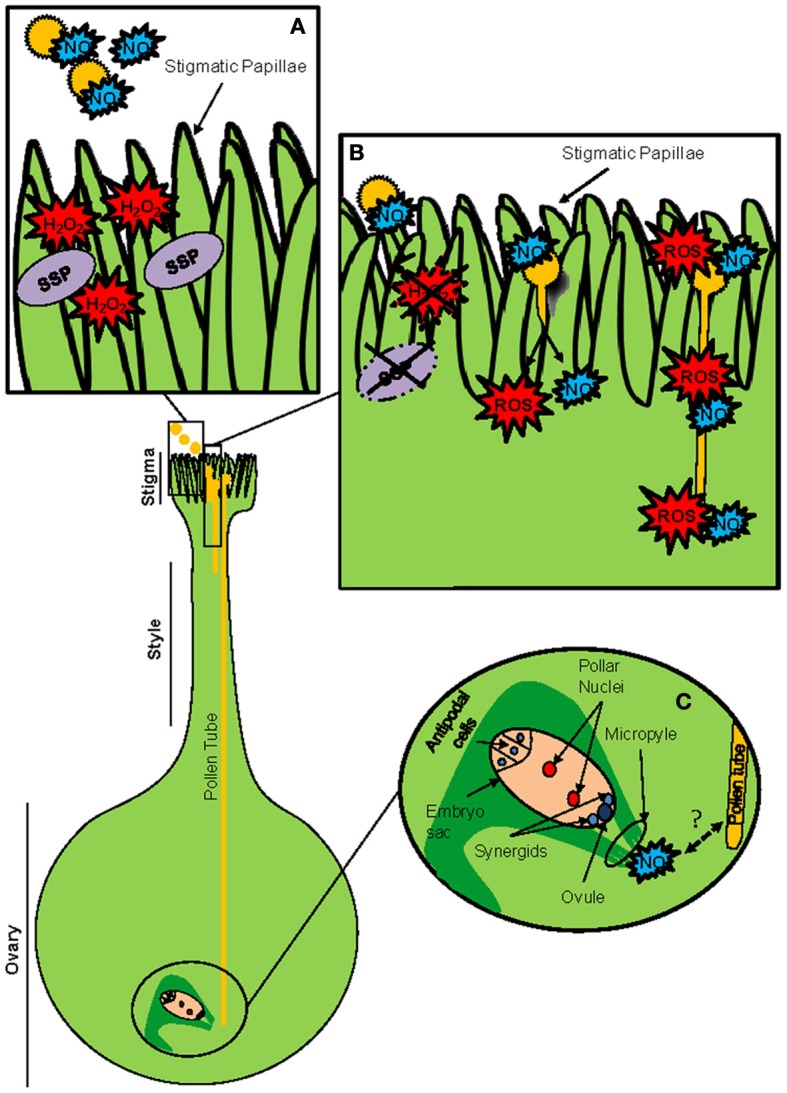Figure 1.

ROS/NO are implicated in plant reproduction signaling. Model gynoecium of an Angiosperm. (A) Receptive stigma at high magnification, before pollen-pistil interaction. Pollen grains are active NO producers, while the receptive stigma papillae generate large quantities of H2O2 and display enhanced peroxidase activity, in some cases in the form of stigma-specific peroxidase (SSP). (B) Stigma and pollen grains during diverse phases of their interaction. Both the enhanced peroxidase activity and the high levels of H2O2 become significantly reduced after pollen landing on the stigma and pollen germination, likely through pollen-produced NO signaling. The germinating pollen grains and the elongating pollen tubes produce ROS and NO, particularly at their tips. (C) The embryo sac is reached by the pollen tube tip trough the micropylar end. NO produced in micropyle could be involved in pollen tube guidance.
